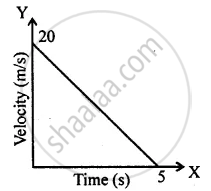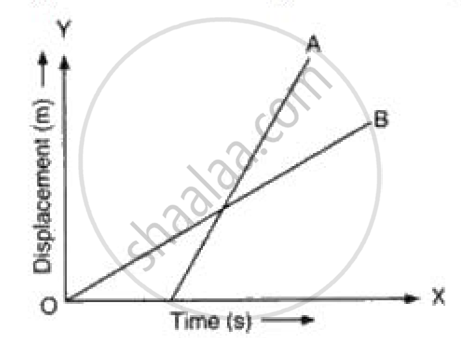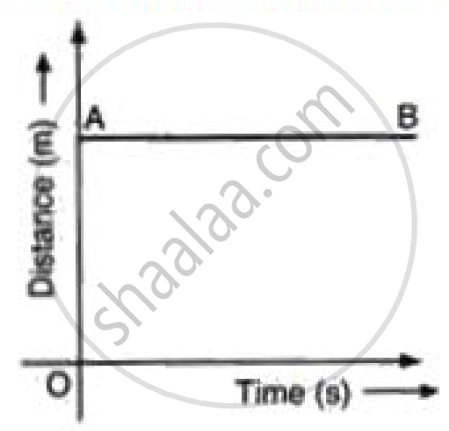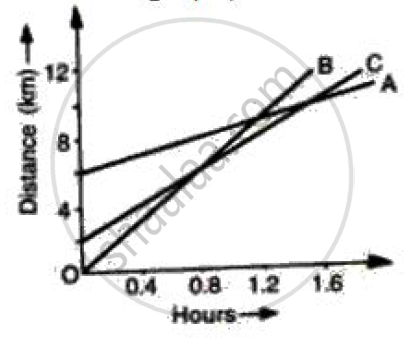Advertisements
Advertisements
प्रश्न
A train starting from rest picks up a speed of 20 ms−1 in 200 s. It continues to move at the same rate for the next 500 s and is then brought to rest in another 100 s.
- Plot a speed-time graph.
- From graph calculate
(a) uniform rate of acceleration
(b) uniform rate of retardation
(c) total distance covered before stopping
(d) average speed.
उत्तर
(i)

(ii)
(a) Uniform rate of acceleration = Slope of v.t. graph from O to A.
= `"AE"/"OE"=20/200` = 0.1 ms−2
(b) Uniform rate of retardation = Slope of v.t. graph from BC
= `"BD"/"CD"=20/100` = 0.2 ms−2
(c) Total distance covered before stopping
= ar(ΔOAE) + ar(ΔABDE) + ar(ΔBCD)
= `1/2xx"OE"xx"AE"+"AE"xx"ED" + 1/2xx"BD"xx"DC"`
= `1/2xx200xx20+20xx500+1/2xx20xx100`
= 2000 + 10000 + 1000
= 13000 m
= 13 km
(d) Average speed = `"Total distance covered"/"Total time taken"=13000/800`
= `130/8`
= 16.25 ms−1
APPEARS IN
संबंधित प्रश्न
From the displacement-time graph of a cyclist given below in the Figure, find The time after which he reaches the starting point .

Multiple choice Question. Select the correct option.
The distance covered in the adjoining velocity-time graph is :

Draw the following graph:
Speed versus time for a uniformly retarded motion.
Figure shows displacement- time graph of two objects A and B moving in a stra ight line. Which object is moving fa ster?
Draw velocity-time graph to show:
Zero acceleration
Write a sentence to explain the shape of graph.
Interpret the following graph:
What does the slope of velocity-time graph represent?
Figure shows the distance-time graph of three students A, B and C. On the basis of the graph, answer the following :
When B meets A, where is C?
Which of the following can determine the acceleration of a moving object.
Slope of the velocity-time graph gives ______.
